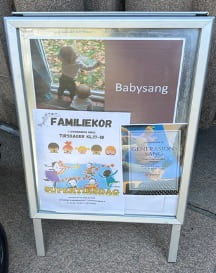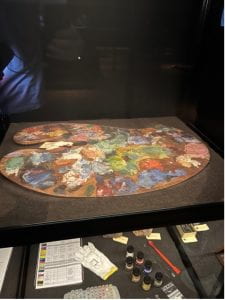The final day of our two-week journey in Oslo, Norway has come and gone, and we ended with a bang! Today we presented our final Community Health projects alongside our Norwegian counterparts at LDUC. This global health education has helped to reinforce our nursing goals and provide the foundation to becoming active participants in health policy changes at home. Identifying a priority health problem in Oslo and evaluating it through a nursing lens, as it related to the Community Health course, meets the target for the United Nations Sustainable Development Goal #17, Partnerships for the Goals. Target 17.15 states the following: “Respect each country’s policy space and leadership to establish and implement policies for poverty eradication and sustainable development.”

The Ohio State University students posed alongside the Norwegian students on the rooftop terrace of LDUC.
As we reflect on our experiences during our final day in Norway, there are many ways that we have practiced both individual growths as global professionals and flourished as a clinical group. Though nearly everyone in Norway can communicate in English, navigation required utilization of different resources. After spending some time adjusting to the local transportation, we became sophisticated riders taking the tram to clinical locations, day trip activities, and everything in between – unless getting in our steps, of course! With students tracking between 5-10 miles a day on their step trackers, wearing comfortable sneakers in Norway is an absolute must.
Both critical thinking and healthy habits are important concepts to bring back home! SDG #3, target 3.6 asks that we halve the number of global deaths and injuries from road traffic accidents to ensure healthy lives and promote wellbeing for all. Such use of passenger travel accommodations and/or mechanism of walking equates to less vehicles on the road. Additionally, public transportation innovations relate to the aim (SDG #9) to build resilient infrastructure, promote inclusive and sustainable industrialization and foster innovation. Under target 9.1 [developing quality, reliable, sustainable, and resilient infrastructure to support economic development and human well-being, with a focus on affordable and equitable access for all], Norwegian citizens can utilize the all-season, electric powered transportation for commuting purposes. We had nice discussions about these aspects of our journey during our last dinner together at The Salmon.

Students enjoy a post dinner walk along the boardwalk and take in scenes of waves, sail boats, and the setting sun!

Norwegian cold coastal waters provide the perfect conditions for year-round production of high quality salmon.
Some aspects of community nursing that were important to our education in Norway included being proactive about ensuring that people have quality preventative healthcare, rather than reacting to illness. Also, we learned how to slow down and enjoy quality aspects of life such as fresh air, hydration, green spaces, and mindfulness. The patient population that we will care for deserves this type of therapeutic approach that Norwegians have mastered. During the long flights back home, we can hopefully consider how to incorporate such lessons into future practice as nurses and future advanced practice providers.

Students arrive back in Columbus, Ohio after two weeks in Oslo, Norway. A long travel time back allowed for plenty of reflection on the Nursing in Norway experience.
We are so grateful for this experience and hope that you enjoyed following along! “Goodbye / ha det” for now!



















































 tion lectures and discussions. We discussed healthcare in the prison system, the emergency shelter for women, Kirkens Bymisjon, and poverty in Norway. We learned about the migrant populations in Norway and the biggest ethnic group, the Roma people. The lectures promoted SDG goal #1: End poverty in all its forms everywhere, SDG goal #10: Reduce inequality within and among cities, and SDG goal #16: Promote peaceful and inclusive societies for sustainable development, provide access to justice for all and build effective, accountable, and inclusive institutions at all levels.
tion lectures and discussions. We discussed healthcare in the prison system, the emergency shelter for women, Kirkens Bymisjon, and poverty in Norway. We learned about the migrant populations in Norway and the biggest ethnic group, the Roma people. The lectures promoted SDG goal #1: End poverty in all its forms everywhere, SDG goal #10: Reduce inequality within and among cities, and SDG goal #16: Promote peaceful and inclusive societies for sustainable development, provide access to justice for all and build effective, accountable, and inclusive institutions at all levels.

